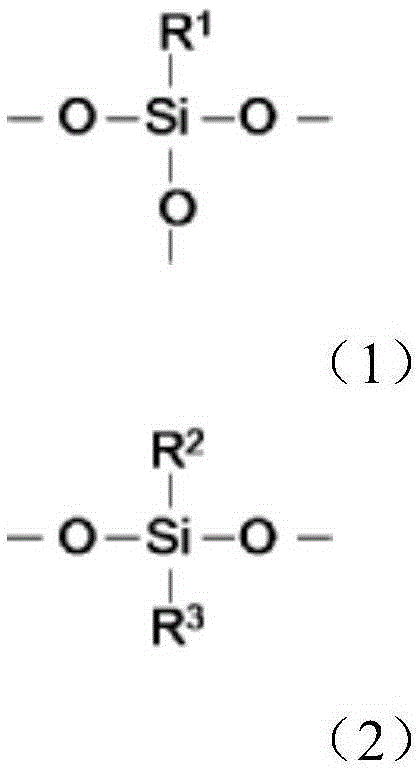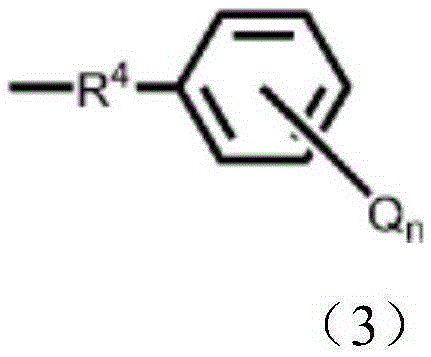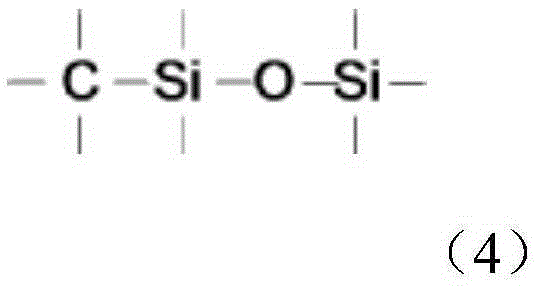Inorganic fine particle composite body, method for producing same, composition and cured product
A technology of inorganic particles and composites, applied in the direction of coating, etc., can solve problems such as aggregation and inorganic particle precipitation, and achieve the effects of low linear expansion rate, excellent wear resistance, and excellent dimensional stability
- Summary
- Abstract
- Description
- Claims
- Application Information
AI Technical Summary
Problems solved by technology
Method used
Image
Examples
Embodiment
[0213] Hereinafter, the present invention will be described more specifically using examples and comparative examples. In the examples, "parts" and "%" are based on weight unless otherwise specified.
[0214] In Examples, the number average molecular weight uses the value measured by the GPC (gel permeation chromatography) method on the following conditions.
[0215] (a) Apparatus: Gel Permeation Chromatography GCP-244 (manufactured by WATERS Corporation)
[0216] (b) Column: 2 pieces of ShodexHFIP80M (manufactured by Showa Denko Co., Ltd.)
[0217] (c) Solvent: dimethylformamide
[0218] (d) Flow rate: 0.5ml / min
[0219] (e) Temperature: 23°C
[0220] (f) Sample concentration: 0.1% Solubility: Completely dissolved Filtration: MaishoriDiskW-13-5
[0221] (g) Injection volume: 0.300ml
[0222] (h) Detector: R-401 differential refractometer (WATERS)
[0223] (i) Molecular weight calibration: polystyrene (standard)
[0224] In addition, in the examples, the measurement of...
Synthetic example 1
[0236] Synthesis of Polysiloxane Segment Precursor (a1-1)
[0237] 415 parts of MTMS and 756 parts of MPTS were added to a reaction vessel equipped with a stirrer, a thermometer, a dropping funnel, a condenser, and a nitrogen inlet, and the temperature was raised to 60°C while stirring under nitrogen ventilation. Next, a mixture containing 40.1 parts of PhoslexA-4 and 121 parts of deionized water was added dropwise over 5 minutes. After completion of the dropwise addition, the temperature in the reaction container was raised to 80° C. and stirred for 4 hours, whereby a hydrolysis condensation reaction proceeded to obtain a reaction product.
[0238] Under a reduced pressure of 1 to 30 kilopascals (kPa), the methanol and water contained in the obtained reaction product are removed under the condition of 40 to 60°C, thereby obtaining a polysiloxane chain with a number average molecular weight of 1000. Segment precursor (a1-1) 1000 parts.
Synthetic example 2~7
[0239] Synthesis of polysiloxane segment precursors (a1-2) to (a1-7)
[0240] It carried out similarly to the synthesis example 1, and reacted with the compounding ratio of following Table 4, and obtained polysiloxane segment precursor (a1-2)-(a1-7).
[0241] [Table 4]
[0242]
[0243] Synthesis of Segment Precursors of Vinyl-Based Polymers
[0244] Synthesis of Vinyl Polymer Segment Precursor (a2-1)
[0245] In the same reaction vessel as in Synthesis Example 1, 20.1 parts of PTMS as a silane compound, 24.4 parts of DMDMS, and 107.7 parts of MIBK as a solvent were added, and the temperature was raised to 95° C. while stirring under nitrogen gas.
[0246] Then, at the same temperature, under nitrogen ventilation, dropwise add 1.5 parts of AA, 1.5 parts of BA, 30.6 parts of MMA, 14.4 parts of BMA, 75 parts of CHMA, A mixture of 22.5 parts of HEMA, 4.5 parts of MPTS, 6.8 parts of TBPEH, and 15 parts of MIBK was then stirred at the same temperature for 2 hours to obtain ...
PUM
 Login to View More
Login to View More Abstract
Description
Claims
Application Information
 Login to View More
Login to View More - R&D
- Intellectual Property
- Life Sciences
- Materials
- Tech Scout
- Unparalleled Data Quality
- Higher Quality Content
- 60% Fewer Hallucinations
Browse by: Latest US Patents, China's latest patents, Technical Efficacy Thesaurus, Application Domain, Technology Topic, Popular Technical Reports.
© 2025 PatSnap. All rights reserved.Legal|Privacy policy|Modern Slavery Act Transparency Statement|Sitemap|About US| Contact US: help@patsnap.com



